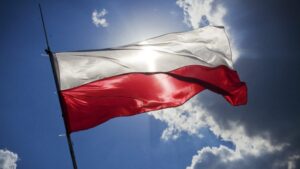
After raising the official hryvnia exchange rate by 1 kopeck on December 31, the National Bank of Ukraine (NBU) strengthened it by another 5 kopecks on January 1 to 41.9725 UAH/$1, according to the regulator’s website.
The NBU set the reference rate at 12:00 on Wednesday at 41.9787 UAH/$1 against 42.0247 UAH/$1 a day earlier.
On the cash market, the US dollar went up by 1 kopeck on the first day of the new year, to 42.40 UAH/$1, and remained at 42.50 UAH/$1 on sale.
The official hryvnia exchange rate against the US dollar weakened by 10.6%, or UAH 4.02, in 2024, and by 14.9%, or UAH 5.46, since the National Bank switched to a managed flexibility regime on October 3, 2023.
Last week, the NBU’s net sales of foreign currency on the interbank market rose to a record high since the beginning of Russia’s full-scale invasion of Ukraine – to $1 billion 625.9 million, and in December – to $5.28 billion, which was also a record high.
As reported, in 2023, the official hryvnia exchange rate devalued by 4.5% to 37.9824 UAH/$1, while the government had budgeted for an average annual rate of 42.2 UAH/$1 in 2023 and 45.8 UAH/$1 at the end of the year. In the state budget for 2024, the Cabinet of Ministers set an average annual rate of 40.7 UAH/$1, and at the end of the year – 42.1 UAH/$1, while the budget for the current year set an average annual rate of 45 UAH/$1.

Ukraine’s gas transportation system has been operating without Russian gas since January 1, 2025, international partners have been informed about it in due course, the “Operator of Ukraine’s GTS” said Wednesday morning.
According to his data, the transit agreement with Russia’s Gazprom ended at 7:00 Kiev time on the first day of 2025, accordingly suspended the transportation of natural gas from the entry point “Suja” on the eastern border of Ukraine to the exit points on the western and southern borders of the country.
“OGTSU has prepared the infrastructure in advance for functioning in the zero transit mode and reliable gas supply to Ukrainian consumers. The company’s team is ready to work in the new conditions”, – Dmitry Lippa, General Director of the company, noted.
In particular, in preparation for work in new conditions, OGTSU has agreed to increase guaranteed capacity to ensure the possibility of gas supply to Ukraine and through Ukraine to European consumers. Optimization of a significant number of assets not involved in the operation of the gas transportation system was also carried out.
“All necessary work on the preparation of the system was carried out by the “Operator of the GTS of Ukraine”, so we are absolutely ready for the functioning of our system without transit of Russian gas”, – said the Minister of energy of Ukraine German Galushchenko on the air of the national marathon ‘United news’.
As reported, the contract between NJSC Naftogaz of Ukraine and Gazprom for the organization of transportation, the transport agreement between NJSC and OGTSU, as well as the inter-operator agreement between OGTSU and Gazprom were signed on December 30, 2019. The contract on the principle of “pump or pay” provides for transit in 2020 – 65 billion cubic meters of gas, in 2021-2024 – 40 billion cubic meters of gas per year.
Representatives of the Ukrainian authorities in 2024 have repeatedly stated that Ukraine does not intend to sign the transit contract with Russia after its completion. At the same time, it was stated that negotiations are underway to supply Azerbaijani gas to Europe via Russia and Ukraine, although Baku does not have a significant free resource.
The final point on the issue of transit continuation in 2025 was put by Ukrainian President Volodymyr Zelensky on December 19 on the margins of the EU Summit in Brussels: “we will not be engaged in the extension of Russian gas transit, we will not give the opportunity to earn additional billions on our blood”.
The results of USAID-facilitated stress tests showed that Ukraine’s GTS and UGS are ready to operate under zero-transit conditions.
The European Commission says that the EU is ready to stop transit of Russian gas through Ukraine and that there are alternative routes for non-Russian gas supplies.

Initial registrations of new passenger cars in Ukraine in 2024 increased by 14% compared to 2023 to 69.6 thousand units, Ukravtoprom reported on its telegram channel.
The bestseller of the year was the Renault Duster compact crossover – 6,826 thousand vehicles of this model joined the domestic fleet.
Toyota became the sales leader last year with 10.731 thousand units, Renault took second place with 7.266 thousand units, Skoda was third with 5.033 thousand units, Volkswagen was fourth with 4.899 thousand units, and BMW was fifth with 4.833 thousand units.
The top ten new passenger cars registered for the year also included Nissan – 2.777 thousand units, Hyundai – 2.618 thousand units, Peugeot – 2.474 thousand units, Suzuki – 2.301 thousand units and Mazda – 2.256 thousand units.
According to the report, in particular, in December, Ukrainians purchased more than 5.5 thousand new passenger cars, which is 6% less than in December 2023, but 5.7% more than in November 2024.
In December, Japanese Toyota retained its leadership in the market with 810 units, Skoda took second place with 628 units, and Renault was third with 526 units. VW (435 units) and Peugeot (380 units) also entered the top five.
At the same time, according to the Auto-Consulting information and analytical group, 71.3 thousand new passenger cars were sold in Ukraine last year, which is 9.8% more than in 2023 and almost equal to the result of 2018.
“In December, we were a little short, although the market started very cheerfully and was heading for a better result, but the loss of registries slightly spoiled the final chord,” Group Director Oleg Omelnitsky wrote on Facebook.
As reported, in 2023, according to Ukravtoprom, the first registrations of new passenger cars in Ukraine increased by 60.6% compared to 2022, to almost 61 thousand units, AUTO-Consulting recorded a 62.4% increase in sales, to more than 65 thousand units.

Romania and Bulgaria joined the Schengen area on Wednesday, and starting January 1, 2025, border controls will be abolished on the land borders of these countries with and between the Schengen countries.
“Romania and Bulgaria, welcome to Schengen,” European Parliament President Roberta Mecola wrote on social media on the night of January 1.
“From now on, there will be no more checks when crossing the land borders between Bulgaria or Romania and any Schengen country,” the European Parliament’s social network X reported.
The European Parliament recalled that border checks for air and sea travel were canceled back in March 2024.
The European Commission’s Directorate-General for Migration and Home Affairs called 2025 a historic year for Romania, Bulgaria and its people. “Full accession to the Schengen area is in line with European promises and legitimate expectations. This marks an important milestone in our history,” the statement said.
As reported in the social media of Hungary’s X presidency of the EU Council on December 12, the interior ministers “have just decided to abolish control of internal land borders with and between Bulgaria and Romania as of January 1, 2025.” Austria had previously opposed this because of the high level of illegal migration in Bulgaria and Romania, but later lifted its veto.
The Schengen area is a European space where border controls at the internal border have been abolished. The accession of countries will promote travel, trade and tourism.
Source: http://relocation.com.ua/rumuniia-ta-bolhariia-ofitsijno-vstupyly-do-shenhenskoi-zony/

On January 1, Poland will assume the presidency of the Council of the European Union for the second time, 20 years after the country joined the EU.
The Polish authorities have stated that the main goal of the country’s presidency of the EU Council is to implement priorities related to strengthening security. Warsaw motivates this choice, in particular, by the threat to the European Union that it sees from Russia.
“The Polish presidency will support activities to strengthen European security in all its dimensions: external, internal, information, economic, energy, food and health,” the program of the EU Council presidency states.
The Polish presidency promises to make efforts to uphold and promote the principles and values of the EU, emphasizing the special role of civil society.
Explaining its priorities, the Polish presidency points to “rising geopolitical tensions, the erosion of the international rules-based order, and hybrid attacks against European democracy and security.” All of this, according to Warsaw, “obliges us to defend the values on which the community is based, such as democracy, freedom and the rule of law.”
“For Europe, this is a time of tests and decisions. The EU must protect itself and its citizens and take care of its immediate neighbors. It must give Europeans a sense of security and prospects for development… To make Europe safer, we need the unity of the European Union and its willingness to work together with partners who share our values, including those who seek EU membership. We will support merit-based enlargement of the EU – welcoming new members is a geopolitical imperative and an opportunity to spread stability and economic growth across the continent,” the program says.
The Polish presidency announces plans for “continued support for Ukraine and its recovery” and the intention to “increase pressure on Russia and its allies.”
In defining defense tasks, Poland insists on “coordinated and ambitious actions that complement NATO’s efforts.” “It is necessary to increase defense readiness by increasing military spending, strengthening the defense industry and closing gaps in defense capabilities. The Polish Presidency will support these measures and will seek an in-depth discussion on defense funding in the EU. At the same time, member states must increase defense spending and maintain it at a level commensurate with threats,” Warsaw said.
The Polish presidency replaces the Hungarian presidency and, according to the rules of rotation of the EU Council presidency, will provide this function for six months. From July 2025, Denmark will take over the presidency.

Starting from 1 January 2025, customs clearance for free circulation and the first state registration of new passenger cars in Ukraine (both imported and manufactured in Ukraine) will be subject to compliance with environmental standards of at least Euro 6.
This is stipulated by the Law of Ukraine on the requirements for compliance of vehicles with environmental standards, which was adopted by the Verkhovna Rada on December 17, 2024 and signed by the President of Ukraine Volodymyr Zelenskyy on December 30.
The exception is for new passenger cars imported or manufactured in Ukraine before December 31, 2024.
At the same time, as reported, the law postponed until January 1, 2027, the introduction of Euro 6 emission standards for vehicles (new and used) under UKTZED codes 8701 20 (tractors), 8702 (buses), 8704 (trucks), 8705 (special vehicles).